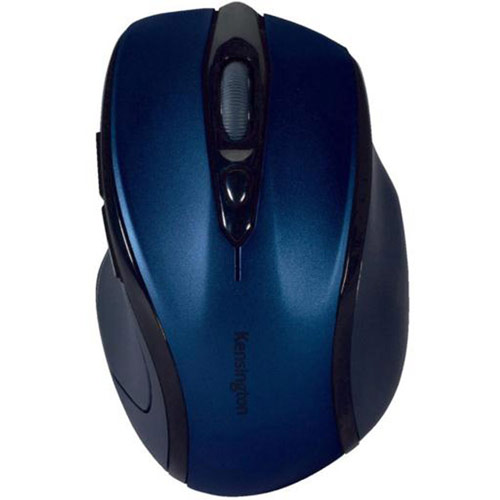

I’m honestly not sure what this is supposed to mean, but it does work very effectively. The Kensington Pocket Mouse uses a Quick RF technology (30% faster according to the package). Popping out the transceiver turns the mouse on and replacing the transceiver turns it off. This is a very neat feature, which looks especially dramatic at night.

The battery power indicator is the translucent scroll wheel, allowing the red LED to shine through. They lasted over 10 days of testing with no problems.

There is no published battery life estimate. The battery compartment is accessed by pressing the black top in the center. The space in the mouse gets covered by a pop up door to cover the opening which keeps dust out and maintains the sharp lines. The transceiver is small enough that even with closely spaced USB ports, it does not block the other ports. With this slick design, pressing a button on top of the mouse pops out the transceiver, which can only go in right side up. The wide body allows the transceiver to be housed in the body of the mouse.
Kensington pocket mouse micro optical wireless manual#
The manual states that there is software to be downloaded off the company website, however the mouse worked just fine natively in Windows XP Home without any additional software. Included in the package is the mouse, the transceiver, a manual, and 2 Duracell AAA batteries, but no carrying case. The scroll wheel is rubberized and works well. The mouse glides with minimum effort, and clicks satisfyingly. The mouse is symmetrical allowing for left handed use. It reminds me of the interior of an Audi TT. The mouse itself features a sharp black and metallic silver design. The Kensington Pocket Mouse fits in between the other two mice: in size, features, and price.


 0 kommentar(er)
0 kommentar(er)
